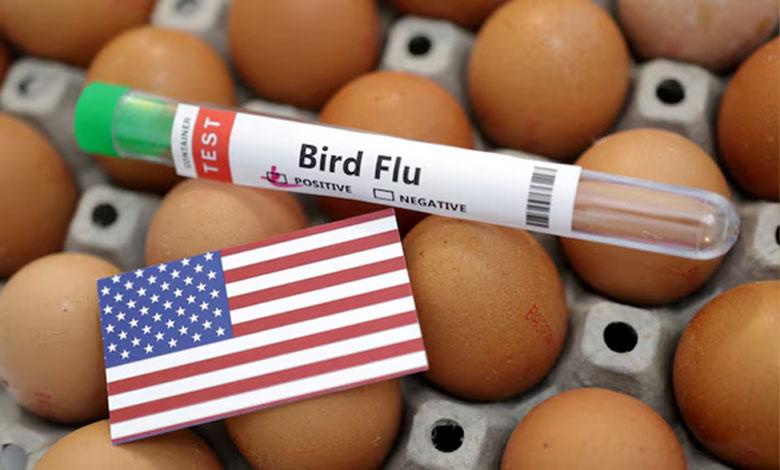Egg diplomacy: US seeks suppliers amid record shortage

The United States is facing an unprecedented crisis in the egg market caused by a large-scale outbreak of bird flu. The disease led to the destruction of millions of laying hens, causing shortages and soaring prices. By data According to the USDA, egg production was 9.12 billion in December 2024, down just 3% from the same period last year. However, the wholesale price for a dozen large eggs last week reached $7.34, more than triple the level of the previous year. This significantly hit the wallets of American consumers, for whom eggs are the main component of breakfast and other meals.
Infographic: IA “FACT”
The political aspect of the egg crisis
President Donald Trump, who promised to lower food prices during his campaign, recently shared an article by conservative activist Charlie Kirk titled “Shut Up About Egg Prices — Trump Is Saving Consumers Millions.” In this article, Kirk argues that the high cost of eggs is not Trump’s personal fault, and that the increase in prices occurred mainly during the final months of Joe Biden’s presidency. He also notes that the bird flu outbreak is the main driver of price increases.
Trump promised to lower grocery prices on “day one,” now says “shut up about the eggs.” With such an ironic title, the British edition The Independent writes about the American president’s efforts to resolve the egg crisis in the country. The publication is outraged that Trump previously said he would lower food prices immediately after returning to the White House, and now publishes an article calling for “shut up” on this significant food problem. Speaking at a grocery table press conference in August, Trump promised that if re-elected, he would immediately get down to making groceries cheaper. “Food prices have risen sharply. Cereals rose in price by 26%, bread – by 24%, butter – by 37%, baby formulas – by 30%, flour – by 38%, eggs – by 46%Trump said during his campaign marathon.When I win, I will immediately drop the prices starting on day one“.
Why is the US looking for suppliers abroad?
Historically, the United States has been self-sufficient in egg production. However, due to mass culling of chickens, supermarkets began to limit sales, and the government is forced to expand import possibilities. In response to the situation, some grocery chains, such as Costco Wholesale and Trader Joe’s, have imposed limits on the number of eggs that can be purchased at one time. For example, Costco allows you to buy no more than three packages of 24 or 48 eggs per day, while Trader Joe’s allows you to buy one carton of 12 eggs. The news resource writes about it Fixygen.ua. Canada, Taiwan, Lithuania and Turkey remain the main suppliers of eggs in the US, but this may not be enough to stabilize prices.
Infographic: IA “FACT”
The Wall Street Journal reports that US policymakers are actively considering new trade deals to mitigate the impact of high domestic prices. However, instead of looking East, to Southeast Asia, Washington focused on already existing trading partners, particularly in Europe and North America.
This is where the opportunity for Southeast Asia appears. This region has significant agricultural potential, but has not yet been considered a significant player in the US egg supply market. If the ASEAN countries can adapt production to the requirements of the American market, they can become strategic partners of the United States. The South China Morning Post, an influential English-language publication based in Hong Kong, writes about such prospects.
The US is looking around the world for 100 million tons of scarce product
American government looking for opportunities to import eggs from other countries. Despite the fact that the administration of Donald Trump has repeatedly declared its territorial claims to Greenland, now it forced to apply to Denmark with a request to export eggs. The United States Department of Agriculture (USDA) has already sent a request to the Danish Egg Association regarding the possibility of supplying products to the American market.
However, according to the association’s CEO Jørgen Nyberg Larsen, Denmark does not have a significant surplus of eggs for export, especially in the run-up to Easter, when domestic demand increases. In addition, European countries have different standards for the treatment of eggs: they do not wash them before sale, leaving a natural protective layer, which requires a different approach to storage and transportation. In the US, eggs are washed to remove possible bacteria, including salmonella, as required by the Food and Drug Administration (FDA). However, washing also destroys the natural cuticular layer, making the eggs more susceptible to contamination. Therefore, American eggs must be stored in refrigerators. In Europe, however, this layer is preserved, which allows eggs to be stored without refrigeration, but requires strict control of the poultry’s housing conditions to minimize the risk of infection.
USA turned to to countries such as Poland (the second largest supplier of eggs in the world) and France, asking for egg exports. However, due to their own problems with bird flu and rising consumption, these countries have limited opportunities to export. Indonesia beforehand appreciated the possibility of supplying the USA with 1.6 million eggs per month. Previously, the main markets for Indonesian eggs were Asian countries. Viera Lehtila, executive director of the Finnish Poultry Association notedthat it will be difficult to start exporting eggs without agreed rules. She added that even if Finland were able to export, it would not solve the US egg shortage. In the country, due to avian flu, millions of birds were destroyed, and the total number of laying hens is 4 million.
In view of the crisis, the US has already concluded an agreement with Turkey, which plans to export 420 million eggs this year. However, this number falls well short of US domestic production of 7.5 billion dozen per year in 2023. If bird flu continues to decimate the chicken population, the U.S.’s dependence on imports will increase.
Risks and benefits of importing eggs
Counting on European supplies of eggs is not always a win-win option. According to Thomas Cull, a professor of supply chain management at the University of Arizona, increased imports can actually lower prices in stores and create competition for local producers. However, the infrastructure of the US and exporting countries may not be ready to transport large consignments of eggs, given their fragility and sensitivity to transportation.
In addition, the Trump administration’s appeal to Europe can be seen as an attempt to demonstrate proactive action to address the problem. “The main purpose is to show that something is being done“, – notes Kal. “No one knows for sure which option will work best“.
The crisis in the US egg market opens up new opportunities for international suppliers, but also comes with logistical and geopolitical challenges. If Southeast Asia can meet US standards, it could become a long-term partner in this area. At the same time, the US continues to look for options among European suppliers, in particular Denmark and Turkey, although the possibilities of these countries are limited for now. The US government will have to adapt quickly to the new conditions to avoid further deficits and further price increases.





